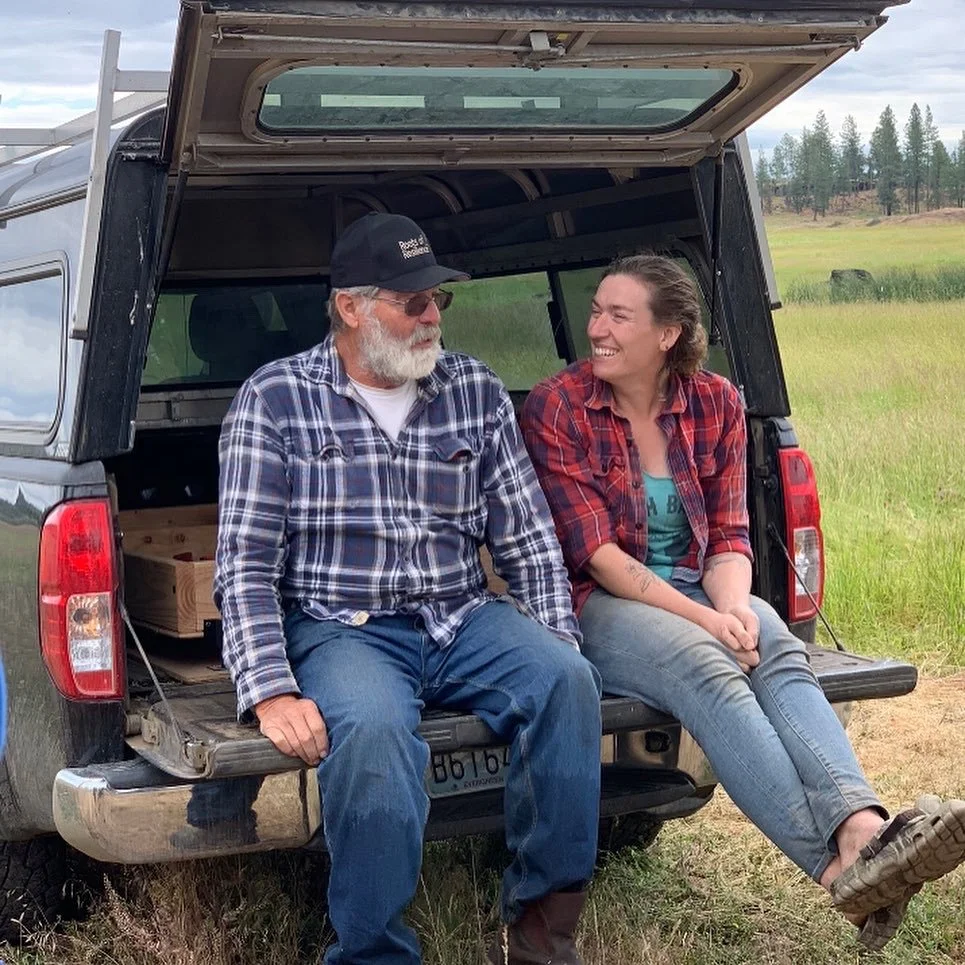Succession Planning: Stewardship Across Generations
Maurice and Beth Robinette, father and daughter
By Beth Robinette
On our ranch, we operate from the paradigm that we don’t own the land — we’re borrowing it from the next generation. That idea becomes very real when it comes time to think about succession.
My family is just beginning that journey. For three generations, we’ve been fortunate that the ranch passed relatively smoothly from one steward to the next. My great-uncle and grandfather worked side by side, my dad was an only child, and so the land stayed in the family without much conflict or complication.
But now the picture is more complex. As one half of the fourth generation, I’ve been here since my early twenties, pouring my energy, sweat, and commitment into the land and the cattle. My sister, who lives in Seattle, doesn’t want to be directly involved in the ranching business but feels a deep and undeniable connection to this place. It takes big sacrifices to leave, and it takes big sacrifices to stay. Both of those truths carry weight in our family’s conversations.
Recently, my parents have begun outlining their own vision for what succession could look like. Ultimately, as the current decision-makers, they are the ones to guide this process. But they’ve asked us to come together as a family, with the help of a facilitator, to put everyone’s perspectives on the table. We’ve been working with American Farmland Trust to help us navigate these early steps — and it has been encouraging to know that we don’t have to do it alone.
Through my work with UVE, I’ve also seen many other ranching families grapple with these same questions. Some of the themes are remarkably consistent:
● How do we balance the contributions of those who live and work on the land with the voices of family members who live elsewhere but still feel deeply connected?
● How do we honor sweat equity without dismissing financial equity?
● How do we create space for multiple visions of the future while ensuring the ranch remains ecologically and economically viable?
The families I work with remind me that succession isn’t about perfection — it’s about persistence. It’s about being willing to stay at the table, even when the conversations are uncomfortable. The most successful transitions I’ve witnessed happen when families start the process early, lean on trusted facilitators, and approach succession not as a single event, but as part of the ongoing work of stewardship.
But another question looms even larger for my own family: what happens when there isn’t a next generation lined up to take over?
At this point, there isn’t a fifth generation of my family preparing to step into full-time management of the ranch. That reality can feel daunting, but it also opens the door to deeper reflection. What does succession look like when the goal isn’t just to pass the ranch down within one family, but to ensure that the land itself remains well stewarded for generations to come?
For us, the answer has begun with partnerships. We’ve built relationships with groups like Hunters of Color and the Salish School of Spokane, creating opportunities for people outside our immediate family to be in relationship with the land. I also hope that New Cowgirl Camp — which brings new and diverse voices into ranching — will continue to grow and thrive here.
My vision for the future is to create the conditions for a thriving community to exist on this land base, far into the future, whether that includes my genetic descendants or not. In many ways, this is not a new idea. Historically, the land of the Interior Salish people was managed under a usufruct system: those who were good stewards were granted access. In other words, land was not a commodity to be owned outright, but a shared inheritance to be cared for collectively.
What might it look like to carry those values forward today? How can we provide opportunities for more people to be good stewards of this land? How can we allow more people to have their livelihoods tied to the survival of this place, in true reciprocity?
These questions don’t have simple answers, but they feel essential to ask. Just as succession planning within a family requires honest conversation, so does succession planning at the community level. It challenges us to think beyond ourselves, beyond our lifetimes, and to imagine a future where land is a source of livelihood, connection, and resilience for many.
For my own family, the next step is to gather together and begin putting our words, hopes, and worries into a shared vision. Though it feels daunting at times, it also feels like an act of care — for each other, for the land, and for the generations yet to come.

